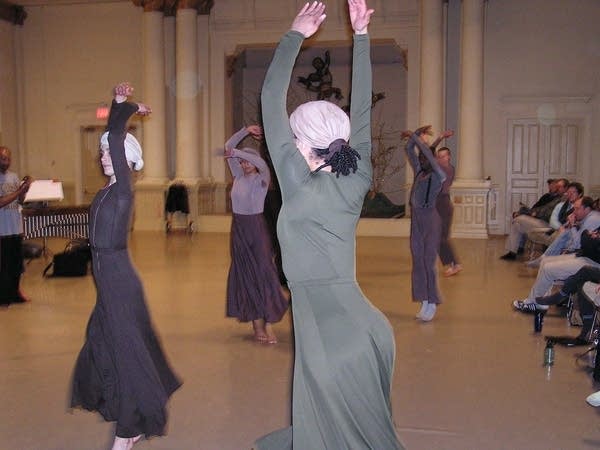Witnessing the life of Sojourner Truth
Go Deeper.
Create an account or log in to save stories.
Like this?
Thanks for liking this story! We have added it to a list of your favorite stories.

When VocalEssence Artistic Director Philip Brunelle came up with the idea of commissioning a new work about Sojourner Truth, he wanted it to be a choral ballet. To help create the work, Brunelle turned to Twin Cities dancer and choreographer Uri Sands.
"A choral ballet? I can't say I've ever done a choral ballet," Sands said.

Uri Sands' unfamiliarity with choral ballet shouldn't be too surprising. Concert works featuring chorus and dance are unusual.
English composer Gustav Holst wrote a few unsuccessful choral ballets in the 1920s and Gian Carlo Menotti presented a work for chorus and dance 50 years ago called, "The Unicorn, the Gorgon and the Manticore." But that's about it.
Turn Up Your Support
MPR News helps you turn down the noise and build shared understanding. Turn up your support for this public resource and keep trusted journalism accessible to all.
Philip Brunelle was involved in a production of the Menotti piece during college, and always had the idea of a choral ballet in the back of his mind. When he decided to commission a work about Sojourner Truth, he thought that format would be a good way to get people interested in her story.
"It would be easy to just have someone kind of lecture about her. Or you might have someone put on some kind of too-stiff cantata. And I thought, I don't think that's what we want to do. I'd like to try a fresh approach," says Brunelle.

Sojourner Truth was a tall, imposing woman with a powerful speaking voice. She was born a slave named Isabella Baumfree in upstate New York, at the end of the 18th century. She escaped to freedom, and after a religious conversion changed her name to Sojourner Truth.
Truth became a traveling preacher, joined the abolitionist movement and worked for women's suffrage.
"Strangely enough, I didn't know that much about her," says Carman Moore, a New York City composer and writer.
On Sunday night, VocalEssence will be singing Moore's words. Moore and Atlanta composer Alvin Singleton researched the life of Sojourner Truth for the choral ballet, and found enough material to create an opera.

Since Philip Brunelle wanted a work around 20 minutes in length, they focused on the moment Isabella Baumfree transformed herself into Sojourner Truth.
"Her choosing that new self-image was almost a metaphor for what the African American population of the U.S. had to do on some level, regardless of how long it would take. And what women of the U.S. would have to do, regardless of how long it would take," says Brunelle. "In other words, to choose to really be who they were as opposed to what someone had forced on them or labeled them with."
The choral ballet "Truth" is an ensemble piece. There isn't one dancer or vocal soloist portraying Sojourner Truth.
Spare percussion opens the ballet, followed by wordless singing from the chorus. An interracial ensemble of nine dancers -- five women and four men -- are intertwined in a motionless heap on the floor. As the work progresses, they slowly rise, creating an abstract representation of Sojourner Truth's transformation.

Composer Alvin Singleton says at first, he had difficulty getting used to the idea of telling the story of one woman through a chorus instead of soloists. But he says it turned out to be a good idea -- as did Philip Brunelle's concept of a choral ballet.
"I think that Philip is on to something. This is going to be a new look at this kind of definition. And I hope that other vocal ensembles become interested in this idea," says Singleton.
VocalEssence will premiere Alvin Singleton's new choral ballet "Truth" during the group's annual Witness concert Sunday afternoon at the Ordway in St. Paul. The production features Uri Sands' dance company TU Dance.
Singleton says he hopes "Truth" will inspire people to learn about more Sojourner Truth and perhaps write other works about her -- maybe even an opera.




